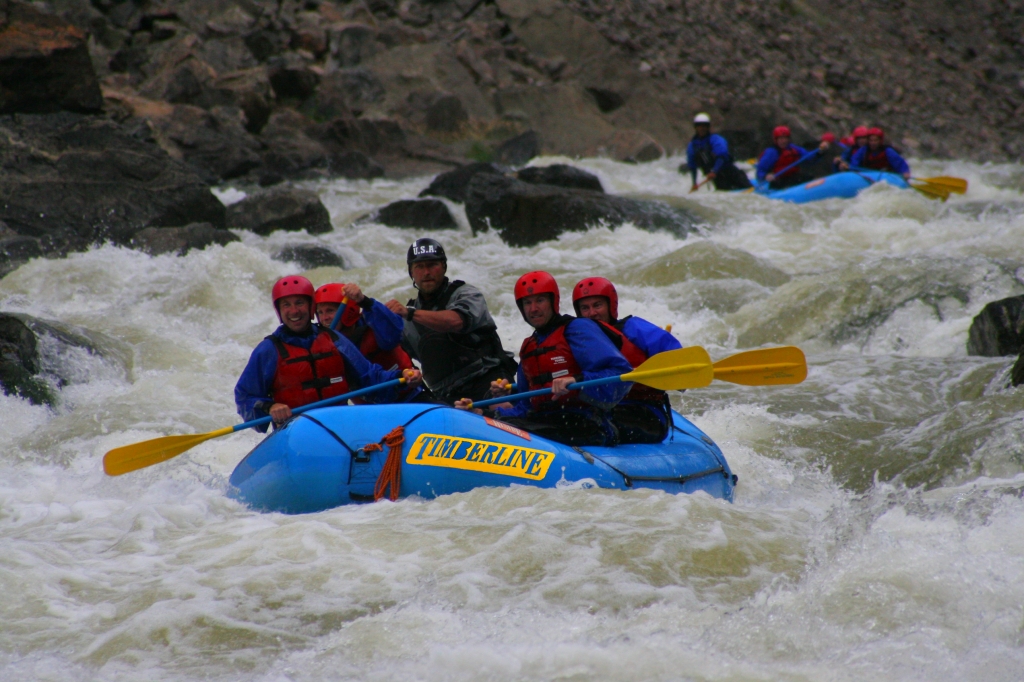[please login to make this ad block disappear]
categories
Colo. Rafting Numbers Down 17 Percent in 2012
 Colo. Rafting Numbers Down 17 Percent in 2012
Colo. Rafting Numbers Down 17 Percent in 2012
"With fewer people rafting we saw an increase in stand-up paddle board and kayak sales."Low water over the last two years has dried up the Central Rockies' rivers early each year, causing rafting numbers to drop with water levels. In 2012 Colorado's rafting industry saw a 17 percent decline in user visits and a 15 percent downturn in revenue. It was a historical decline, with 2002 being the last year when the number of visitors reached such lows.
A report issued in early March at the annual Colorado River Outfitters Association (CROA) showed user days on the state's 28 stretches of raftable rivers falling 17.1 percent in 2012, totaling 411,100 visits. With reservoirs and lakes throughout the state experiencing some of their lowest levels in recent history, the correlation to low river levels is only natural, shortening a rafting season for outfitters who typically only see 90 good days per summer anyway. Wildfires have also done their part to limit the number of visitors to Colorado's rapids. Early season fires during the summer of 2012 scared many vacationers away as national news reported the state was "up in flames." With the loss of visitors so came the loss of cash for those who make their living on the whitewater tourist economy. Statewide the economic input from commercial rafting fell 15.7 percent in 2012, down to $127.6 million compared to $151.4 million in 2011. Some rivers, such as the Blue in Summit County and the Eagle above Avon in Eagle County, barely ran. Other rivers, such as the Cache la Poudre, were choked by wildfire and saw a 40 percent decrease in user days throughout the summer. The number of commercial rafters on the Arkansas River--the country's most-trafficked river--fell 19 percent, losing nearly 40,000 rafters and experiencing its second-lowest tally since 1991. However, all was not lost. While 18 of the state's 28 rafted stretches of river saw declines, some waters enjoyed gains as tourists flocked to rivers that only saw small drops. The Colorado River, which held raftable flows throughout the season, hosted 30 percent more traffic from the upper stretch near State Bridge through Utah's Westwater Canyon. In the Four Corners region, last season's snowpack appeared to hold out, although rapids for whitewater rafting were tamer, leading to a decrease in users. The upside is that this led to an increase in other activities. "With fewer people rafting we saw an increase in stand-up paddle board and kayak sales," says Tony Miely, co-owner of Four Corners River Sports in Durango. Local lakes and reservoirs in the Durango area as well as a stretch of flat water just north of town on the Animas River provide space for these activities. Miely also says his kayak school saw an increase in beginners getting out on the water. "Less intimidating waters allowed more people to get on the water throughout the summer and fine tune their skills," he says. With another Colorado winter yielding a below average snowpack (approximately 71 percent below average in March), the region's propensity for drought is rearing its head again. Already this year, organizers of the Rocky Mountain Surf Fest, a SUP event on the Colorado River in Glenwood Springs, are considering cancelling the event for lack of water. In April 2002, the state's river basins held a snowpack of 52 percent of average. Last April, the statewide snowpack was 54 percent of average. However, the last drought of 2002 saw a 40 percent dip in recreational users, compared to last summer's 17-percent dip. And this year February and March already have brought much needed snow to the region. Matti Wade, who owns and operates Ten Mile Creek Kayaks in Frisco, was barely able to get on the upper Blue River or his backyard Ten Mile Creek last summer. Surfing and freestyle events were essentially non-existent at many playholes. Toward the end of the summer Wade saw the Dillion Reservoir reach its lowest depths since 2002. "It's hard to paint a good picture for the upcoming summer, I can't help but be realistic," he says. "We will need Biblical snow to come from now until the end of April, which is not out of the question, it has happened in years past." Like Four Corners' Miely, Wade also capitalized on low water with SUP rentals and lessons; but rafting outfitters don't necessarily have those fall-backs. To attend a meeting or read up on what the Colorado Water Conservation Board has planned and how they are dealing with water supplies throughout the state, take a look and their website for a schedule of the board meetings that are open to the public. |





